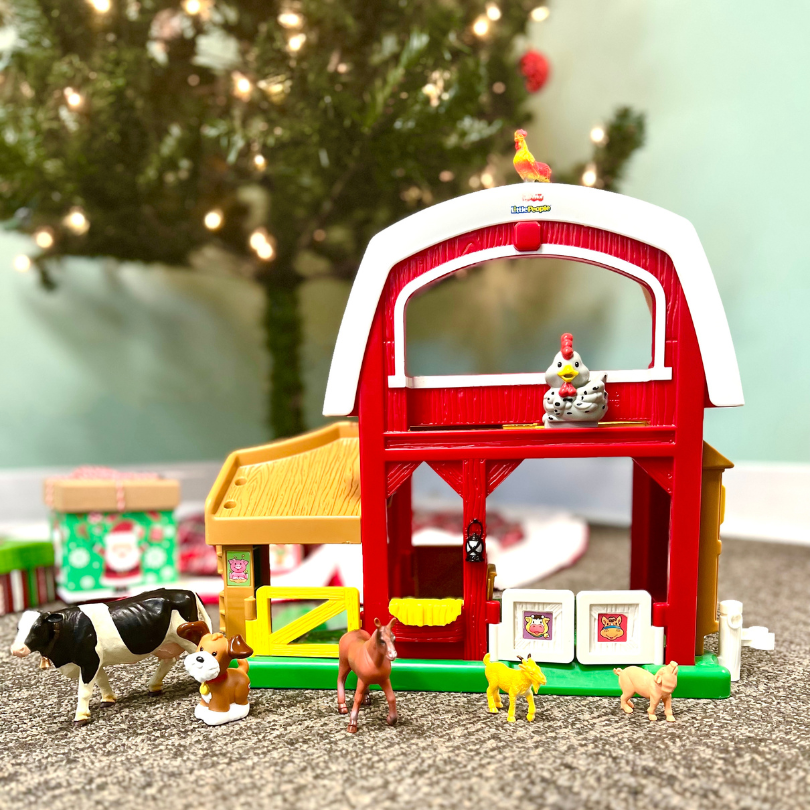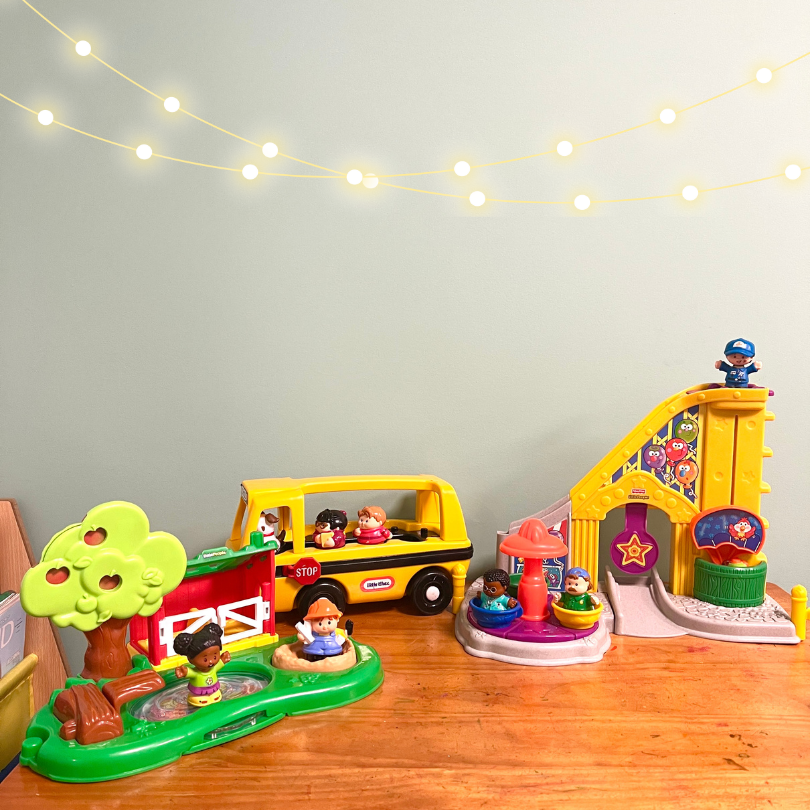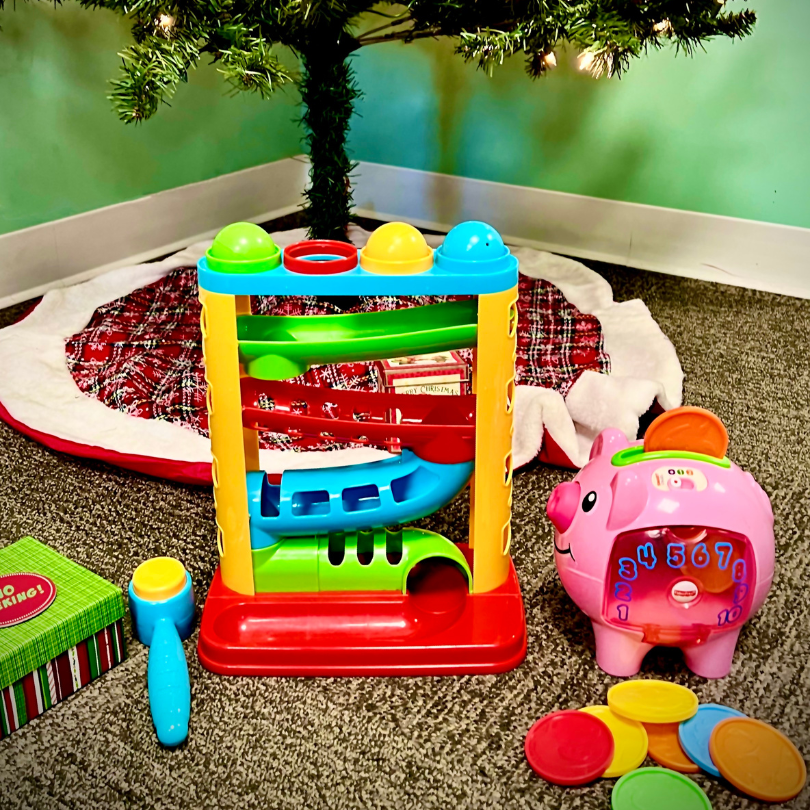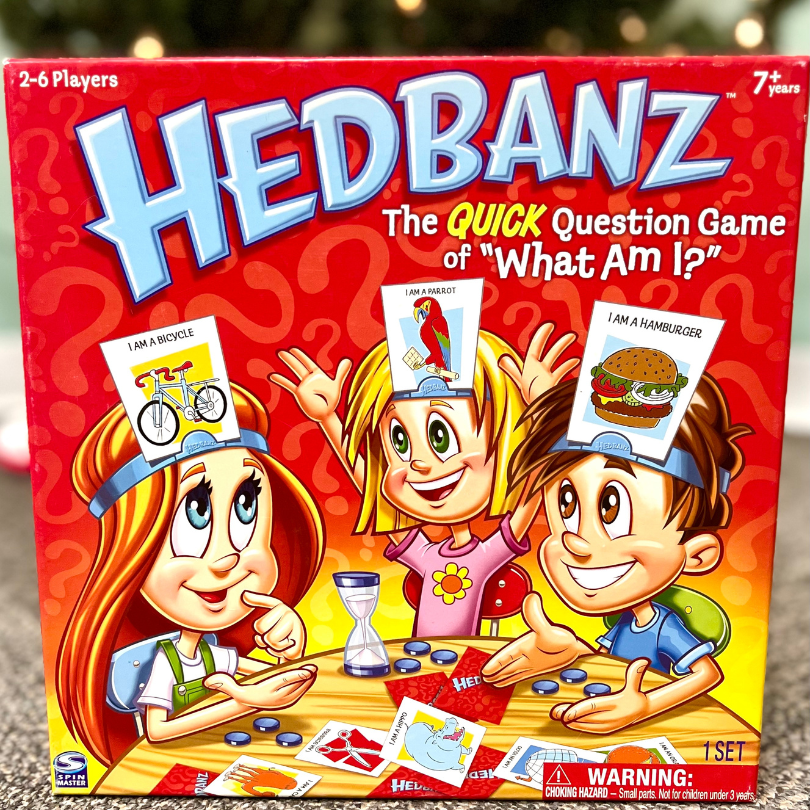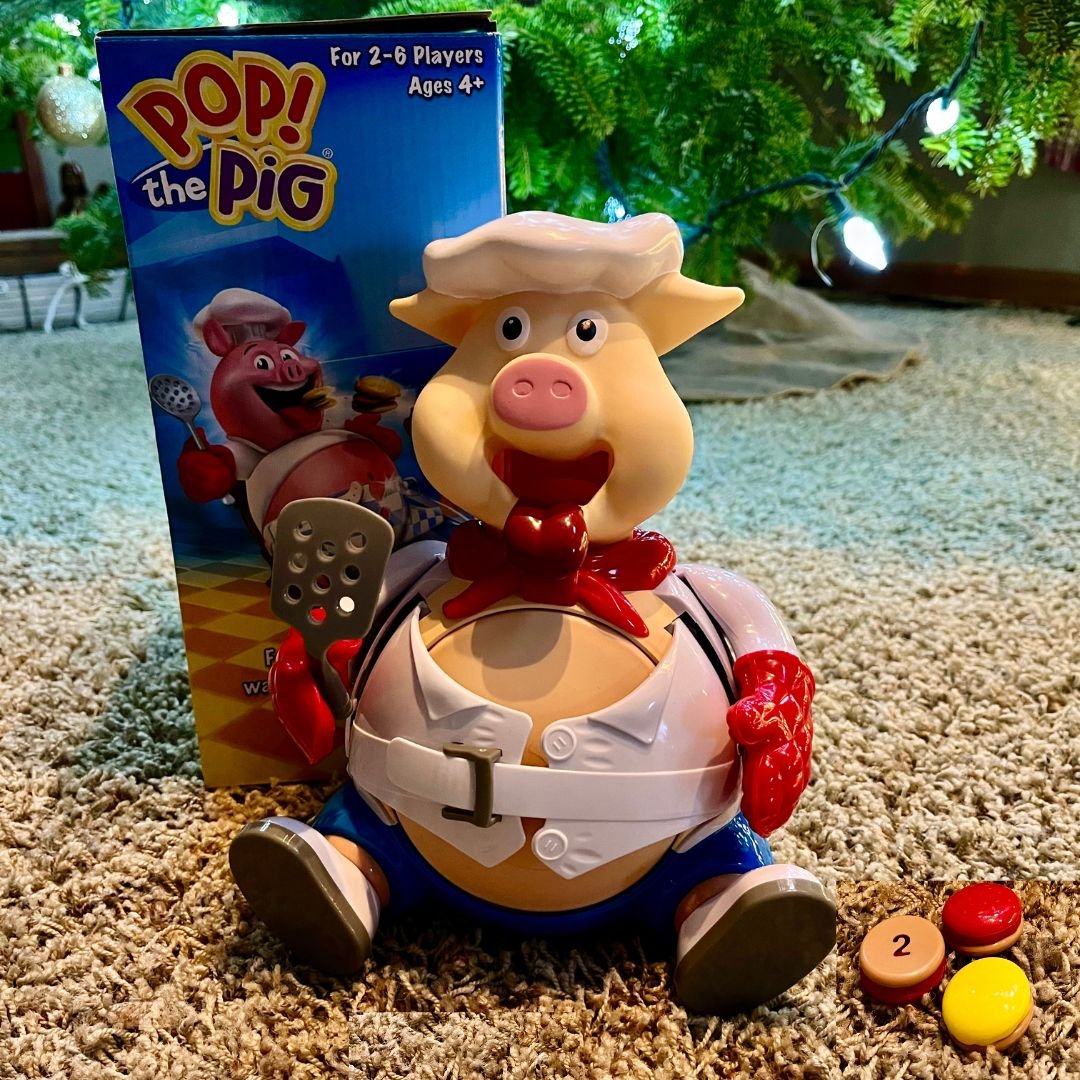Toys For Learning Speech
A frequent question we get is what toys will help my child learn language? The good news is that many toys can be utilized for encouraging language development!
Below is a list of some of our favorite toys! They are the tried and true toys used in our clinics.
These toys are great by themselves, but if you want to add another layer of fun language learning, we have also created several posts on our blog on how to use toys to help with language development. These toys are great for that.
Feel free to check out some of these posts to learn more about helping your child with language development:
Disclosure: Some of the links below are affiliate links. This means that, at zero cost to you, EJ Therapy will earn an affiliate commission if you click through the link and finalize a purchase.
1). Playdoh and playdoh accessories
Our Picks:
Play doh is an all-around great tool. For utilizing communication temptations, you can use play doh to help your child request what color they’d like or the tool they need. Play doh is also great for incorporating words like “squish” and “roll.” You can even get different playsets to help introduce vocabulary or help with labeling. For example, you can get a construction or cooking playset to help teach your child new words. Getting a set with a theme they are interested in will help encourage your child to interact more.
2). Bubbles
Our Picks:
We love to use bubbles in therapy!
Bubble guns or bubble machines are a great gift idea for children.
Bubbles are another great toy to use while practicing communication temptations (if you're not sure what that is, check out our earlier post). They also can be used to teach directions by directing the flow of the bubbles up or down. With words like "pop" or "bubble," you are targeting the important "P" and "B" sounds.
3). Barn with animals
Our Picks:
Another favorite often used by our speech therapists is a toy barn set. If your child likes to play more with toy animals rather than toy people, this is a great tool to use for language development. Again, you can use this for things such as teaching prepositions, directions, and environmental sounds.
The barn and barn animals are used for labeling vocabulary and you have a whole collection of different animal sounds to introduce, such as woof for a dog, oink oink for a pig, baa baa for a sheep, and so on.
When your child is in the early stages of language learning, it is easier for them to imitate simple sounds or words they hear often through repetition. This type of learning can be elicited through playing with toys such as this barn playset. When kids are able to communicate through gestures and can imitate actions such as a cow eating grass, for example, they are ready to begin imitating simple sounds. This is why play sets like this are an excellent toy for a child to have because of how they encourage this type of learning.
4). Anything little people
Our Picks:
Little People toys and playsets are a favorite at the clinics and schools.
Not only are these toys a bunch of fun for the kids (great for engaging their imagination), they are also great for teaching:
-how to follow directions
-prepositions
-environmental sounds
-exclamatory words
If you have a Little People play house, you can teach your child how to follow directions using prepositions by saying phrases such as, “put the chair in the living room” or ask something silly like, “does the table go on top of the house?”
These toys are also great for environmental sounds (i.e., beep beep) or exclamatory words (yay, oh no). You can also practice verbal routines with them. Use phrases like, “ready, set, go” or sing wheels on the bus when using a toy bus that comes with a playset.
5). Cars
Our Picks:
Cars and trains are especially loved by the boys. If your child is really interested in cars or trains, utilize this to help with their language development!
Cars and trains are good for teaching:
-environmental sounds such as “beep beep,” “vroom,” or “choo choo.”
-simple CV(consonant-vowel) words like “go,” or “key.”
-how to follow directions. Tell your child to take the car or train under the bridge or around the table.
You can incorporate a lot more great elements by getting a race or train track as well!
6). Any of the Poke-a-dot books
Our Picks:
Poke-a-dot books are great children’s books that have interactive elements. You know how satisfying it is to pop bubble wrap? Well these books have dots that you can press, making a “click” or “pop” noise. These books help your child learn because they encourage multi-sensory learning. The child can follow along and pop the dots, or you can have them describe the pictures before they’re allowed to pop the dots.
The poke-a-dot books are a wonderful tool to teach themed vocabulary and identification. For example, in a farm-themed poke-a-dot book, you can ask a child to identify the pig or sheep. You can ask what sound each farm animal makes. The more prompts you give your child, the more opportunities they have to interact with you and learn new sounds and words. This isn’t only applicable to farm-themed books. If you have a dinosaur book, encourage your child to identify the purple dinosaur or make a “roar” sound.
Other things you can request your child to imitate is to introduce words like “poke” or “pop.” Press the dot and say one of these words and have your child imitate you. Another thing you can do if you have trouble getting your child to interact is to request for them to turn the page.
You also don’t have to necessarily buy the poke-a-dot book brand to get great interactive elements in books. Feel free to look up sensory books and see what strikes your fancy!
7). Cause and effect toys
Our Picks:
As the name implies, cause-and-effect toys are used to help kids figure out how their actions affect their environment. It is important for both language and motor skills! These toys usually have a lot of interactive components that work on things such as hand grasp, hand-eye coordination, and more.
These toys also can be used to improve language development greatly. They are great to use with communication temptations (we have a post about this on our blog!), a method of tempting your child to communicate with you. In this case, they may ask for help if they don't understand or can't manipulate the toy to do what they want.
For the piggy bank and ball drop, you could hold the coins or balls and have your child request them. They are also great for learning words like "in" or "out," teaching directions, and working on articulation (simple words formed by a consonant followed by a vowel, such as you, me, up, etc.).
8). Pretend food
Our Picks:
Pretend food can be a great tool for language development, imaginary play, and fine motor play. The pretend food comes in really fun play sets that are very interactive! They make food you can cut that uses Velcro to stick back together and playsets that incorporate lots of different utensils.
Toys like this are great for:
-teaching words like “eat” or “cut”
-Modeling vocabulary
-requesting
-following directions
-labeling vocabulary
With these toys, you can use similar activities we’ve talked about in earlier posts (communication temptations, themed vocabulary, earning rewards).
With the list above, you can request your child to give you the apple, or to cut the apple in half and give you a half. You can tell them to put the lettuce in the salad bowl. You can ask your child what food something is. If your child is playing, go along with what they’re doing and fine openings to interact with them. Pretend food is just another tool to help engage your child
9). Building toys
Our Picks:
The stacking blocks in our picture are more for very young children, but the types of stacking blocks can differ widely, so you can easily get a set that is more age appropriate for your child. There are magnetic blocks, soft stacking blocks, wooden blogs, sensory blocks, and so much more.
Stacking blocks can be used for exclamatory sounds (crash, boom), prepositions (up, down), and labeling colors. A great activity to do is to get blocks with words or pictures on them, or you can tape words, phrases, or images on the blocks and have your child identify them. To help prompt your child, ask questions like “what is this animal,” or, “can you show me your favorite color?” You can get really creative with these!
10). Critter Clinic
Our Picks:
You can also find the critter clinic at target for a cheaper price.
The critter clinic is a really fun and cute toy that is good for both OT and speech! It’s really great for challenging the kids and really sparking their curiosity. Since there are doors AND keys, this is a wonderful toy to use with communication temptations. You want to tempt your child to ask you for help opening the doors. This is great for teaching words such as open, shut, put in, take out, etc. You can change the theme of what you put into the critter clinic. It can be farm animals, pets, toy foods, cars, or really anything you’d like.
Since there are so many manipulative elements to this toy, it is also great for fine motor skills. Your child is working on pincer grasp, hand-eye coordination, turning keys, manipulating small objects, and more.
11). Hedbandz or Apples to Apples Jr.
Our Picks:
Hedbanz or Apples to Apples Jr. are both fantastic games for older kids. Hedbanz is marketed towards children 8 and up, while Apples to Apples Jr. is marketed towards children 9 and up. These games encourage communication and are a great activity for families or friends to do all together. Your child may not even realize they are working at improving their vocabulary because they are having so much fun!
Games like this target areas such as:
-vocabulary
-synonyms and antonyms
-social skills and turn taking
-descriptions
-comprehension
-categories
Although these are games and are fun, they are actually helping to improve your child’s language skills. They introduce new concepts while challenging your child to provide descriptions and utilize new or rarely used vocabulary words. Games like this also allow extra family time, making them an even more fun Christmas gift!
12). Pop the Pig
Our Picks:
Pop the Pig is a game created by Goliath Games. It incorporates colors, turn-taking, numbers, and counting. The object of the game is to pop the pig’s belt by feeding it hamburgers. Each hamburger is a different color and has a number on the bottom. The number indicates how many times the pig must chew its hamburger.
This game is not only fun and creative, but it can also be utilized in language learning. This can be made into a goal-oriented game where the child must go through repeated trials to earn a burger. For example, the object of the game might be to have the child say “pop.” If the child repeats it, they earn a hamburger and can feed it to the pig. You can also do this with numbers or colors. If your child is younger, you do not have to incorporate rolling the die.
This game is great for working on articulation as well as final consonants like those in the words “pop,” “pig,” and “eat.”
13). Matching Games
Our Picks:
Turtle Picnic or Oreo Matchin Middles’ are two Fisher Prices games that we often use in our clinics. Matching games like this are great because they can be simplified for younger children. They incorporate colors, shapes, and different objects. They can be used for labeling colors, identifying objects or shapes, following directions, requesting, and more.
Try prompts like:
“What is this color?”
“Can you show me the pumpkin?”
“What is your favorite food?”
“What shape is this?”
“Can you point out the square?”
“What color matches this one on the turtles back?”
Some of our therapists even make up their games utilizing these elements. For example, you can have a child work for different parts of the Oreos to match them up or work for the other fruit cards.
14). Eggs
Our Picks:
These eggs have so many uses for both speech and occupational therapy. They are a simple concept, but they come in a variety of different versions. Our favorite is the egg set with the faces on them, as this adds another element, but we also have a plain version of the eggs.
The eggs each have a shape, so the two halves must match up so that the egg will close.
If your egg set has faces showing different emotions, you can also ask your child to show you which egg is happy, sad, or mad.
You can have your child count the eggs or label the colors. You can also use the eggs to teach your child colors or numbers.
15). Reusable Sticker Pads
Our Picks:
Reusable sticker pads are fantastic for imaginary play, themed vocabulary, environmental sounds, prepositions, and more. The best part is that they are reusable! You can work on many different concepts, but these are some ideas:
- turn-taking ( separate the stickers between you and your child, and take turns placing them)
-sort the stickers by categories or by page. For example, separate the stickers by categories such as people, animals, and objects.
-WH questions. Ask who, what, where, when, and why questions.
-Work on prepositions (under, over, across, between, etc.)
This is also a fantastic toy for imaginary play. You can come up with different scenarios or have your child come up with them. You can also use these like a social story to show your child how to behave in different situations.
16). Mr. Potato Head
Our Picks:
Mr. Potato Head is a classic toy with so many uses.
You can use it to target or teach:
-descriptions
-labeling clothing items and body parts
-following directions
-requesting
-turn taking



